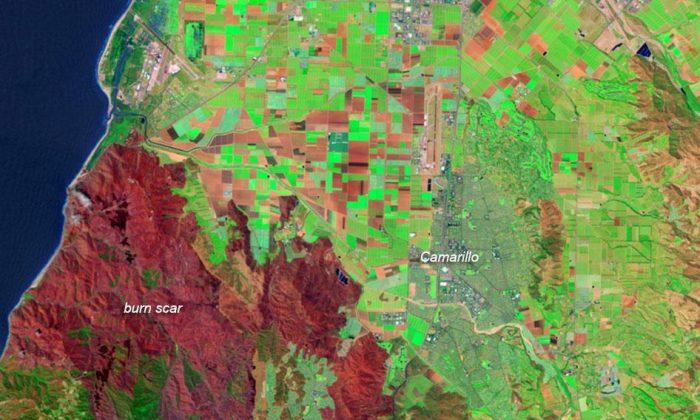Firefighting teams battle wildfires in California and New Mexico this weekend, not the first spring wildfires to rage in the region this year.
The current fire in California is concentrated in the Angeles National Forest, north of Los Angeles. In early May, a wildfire blazed about 74 miles West, near Camarillo, Calif.
When the flames die down, the work just begins for the National Aeronautics and Space Administration’s (NASA’s) Burned Area Emergency Response (BAER) teams. This group of NASA scientists trek through the burn-scarred landscape, often while parts are still smoldering.
They search for signs of risk that could cause floods and landslides—hazards that often follow wildfires. Leaf litter and organic matter usually soak up moisture, but when this litter is burned away, serious threats ensue from water runoff.
BAER’s hydrologists, biologists, geologists, engineers, botanists, ecologists, and foresters arrive on site—manpower permitting, as NASA’s website acknowledges—to prevent the aftermath of wildfires. When the danger seems to have passed, BAER maintains a vigilant watch.






Friends Read Free